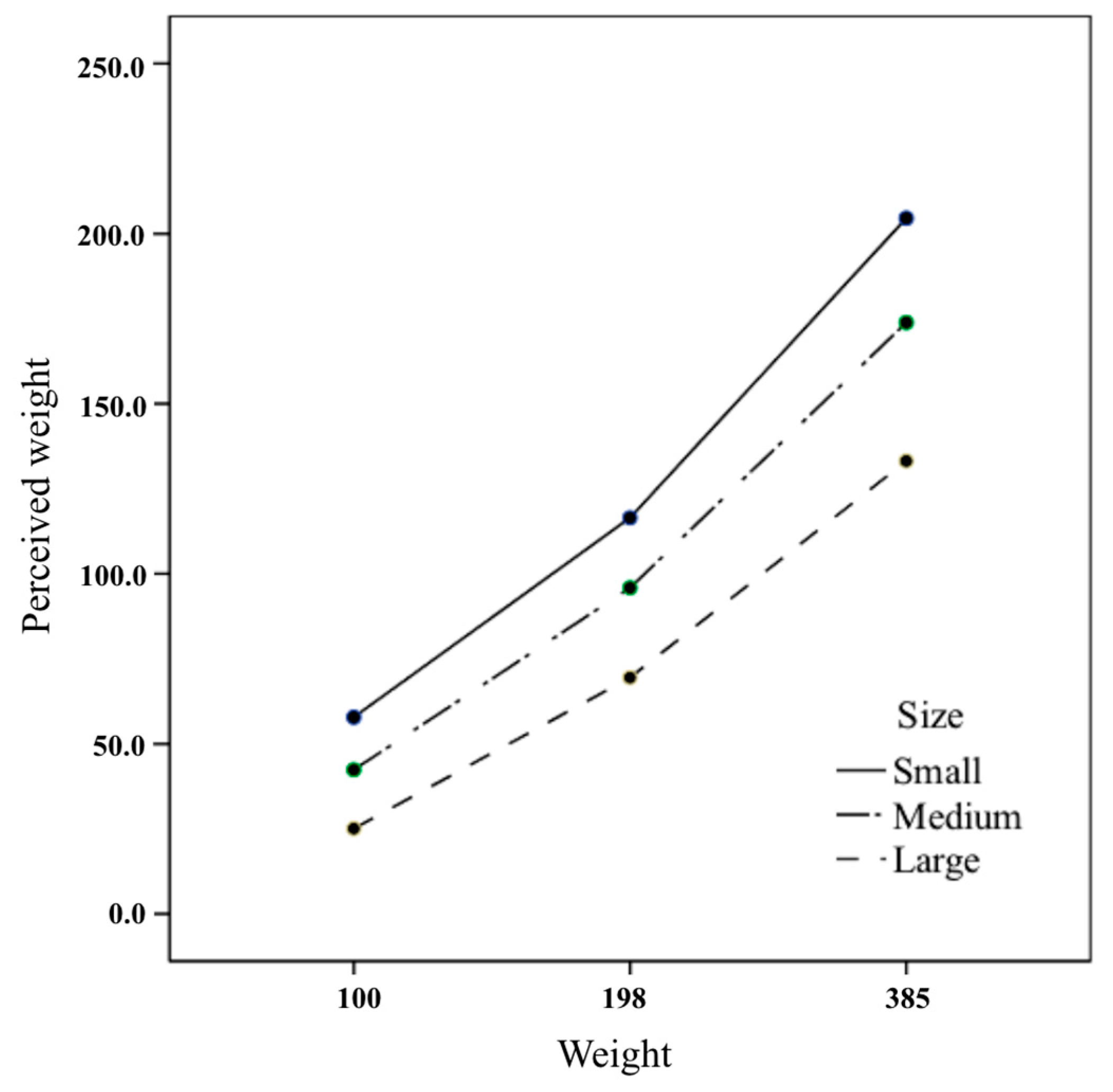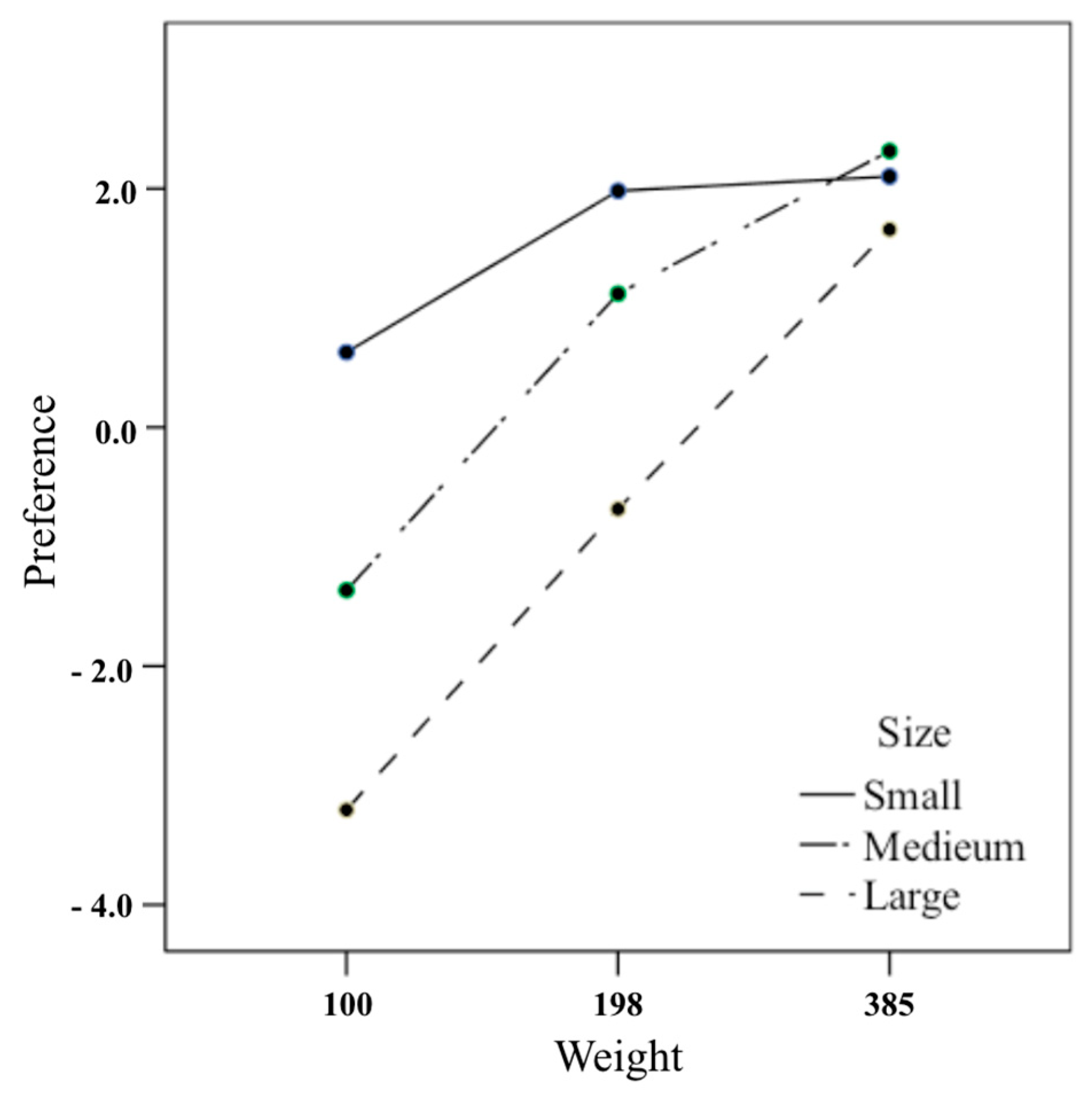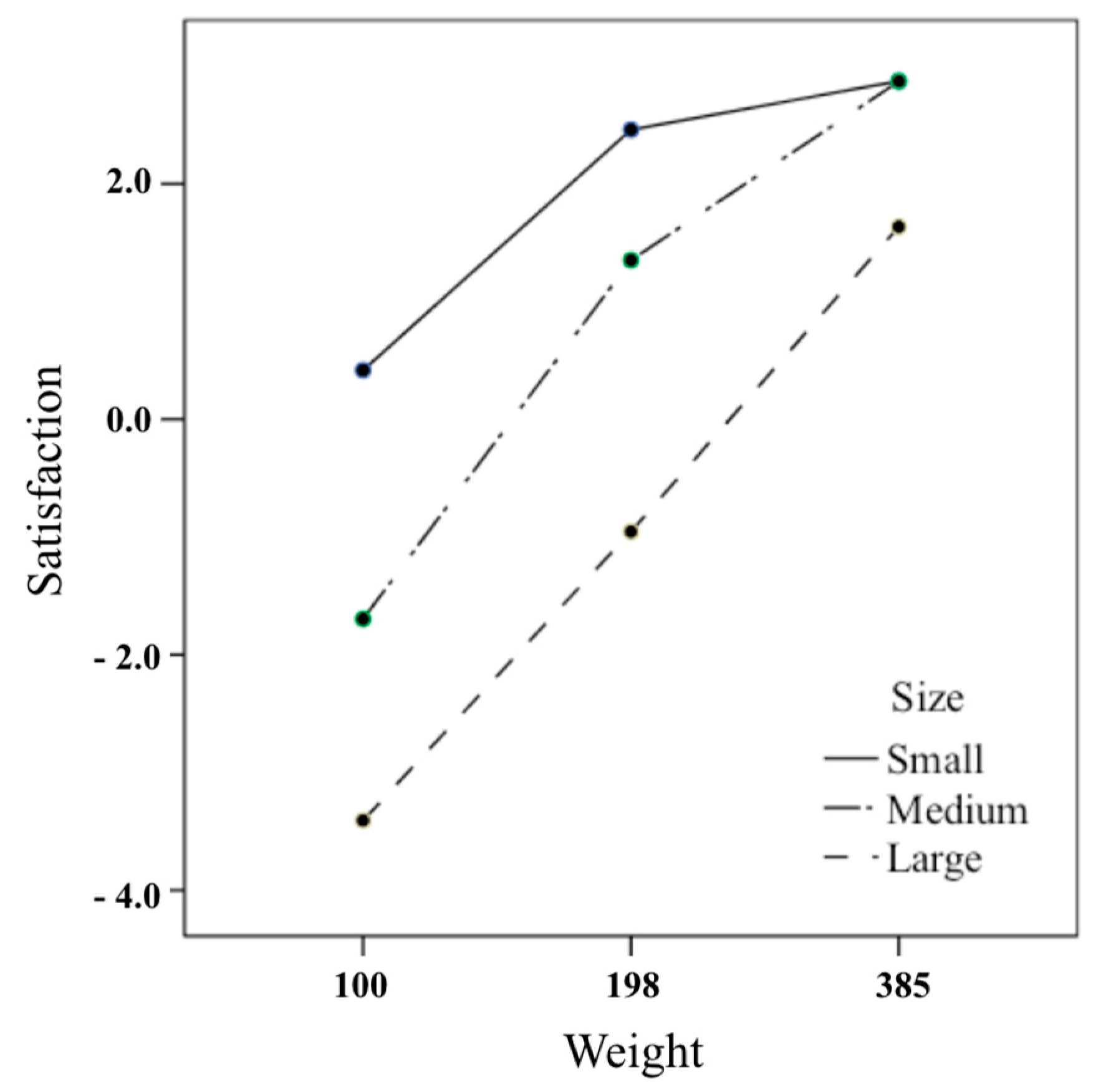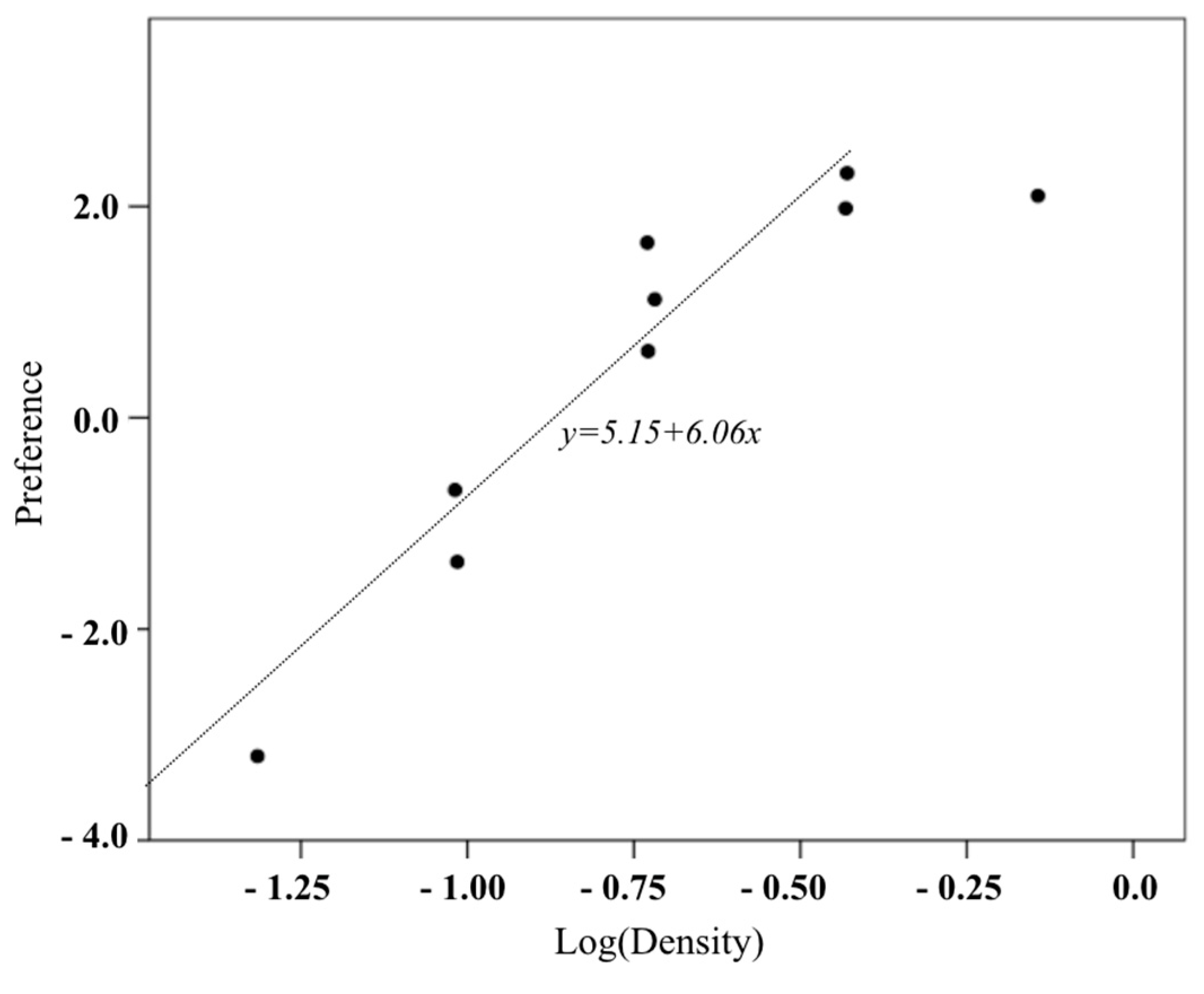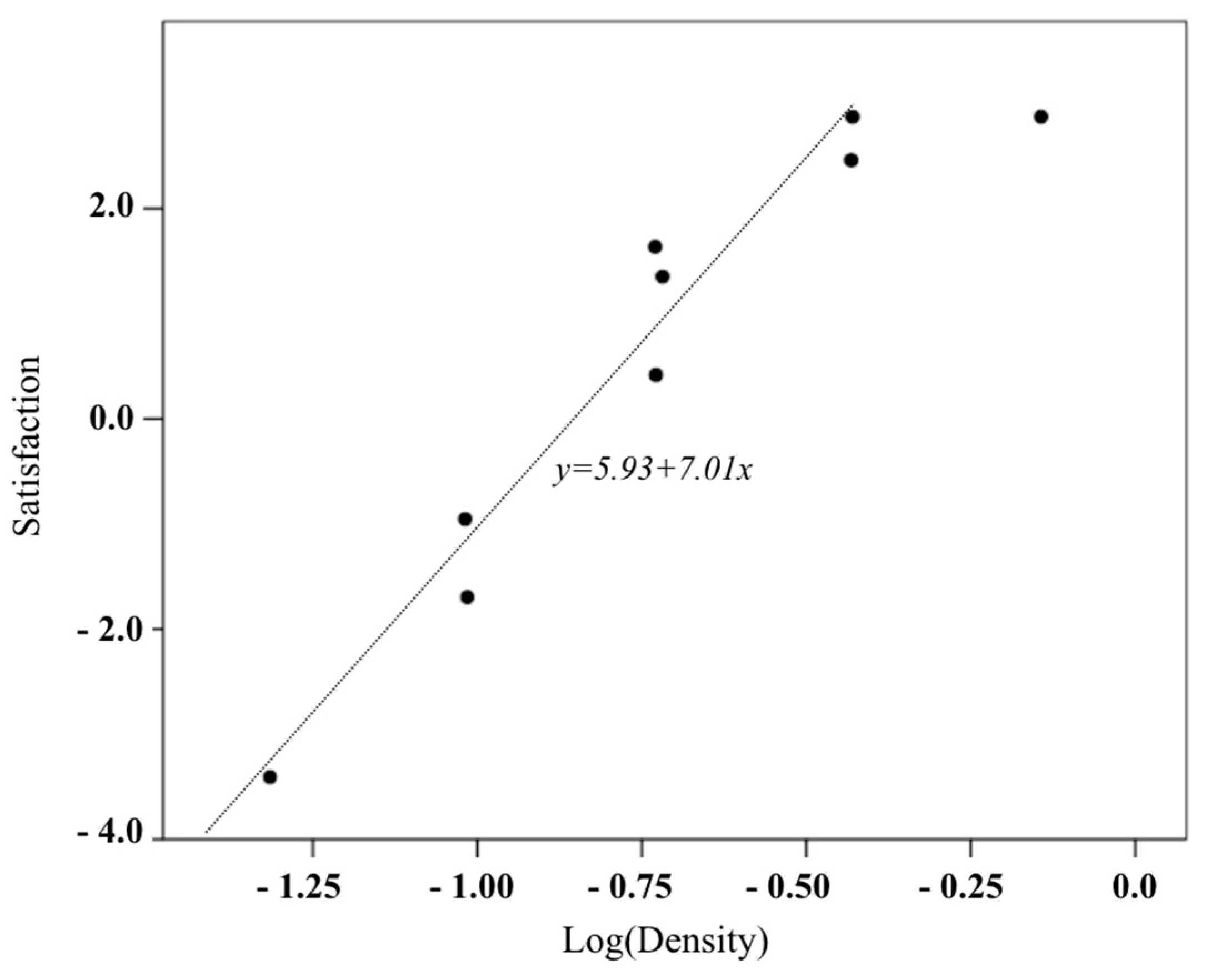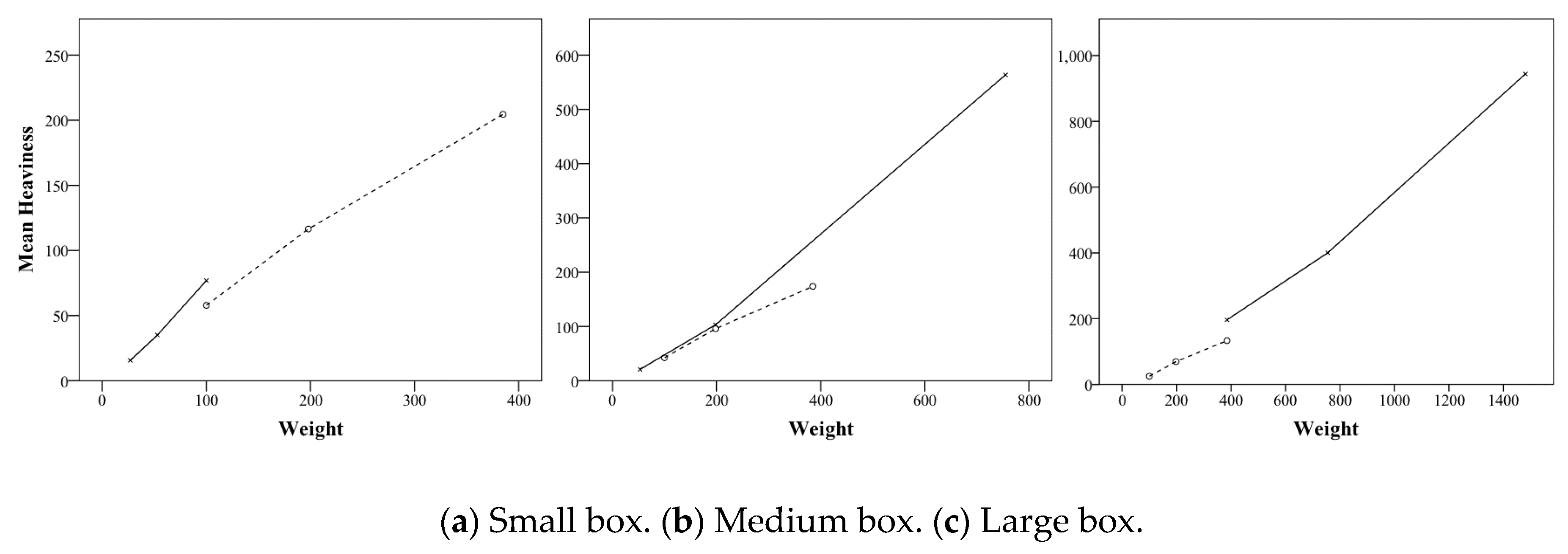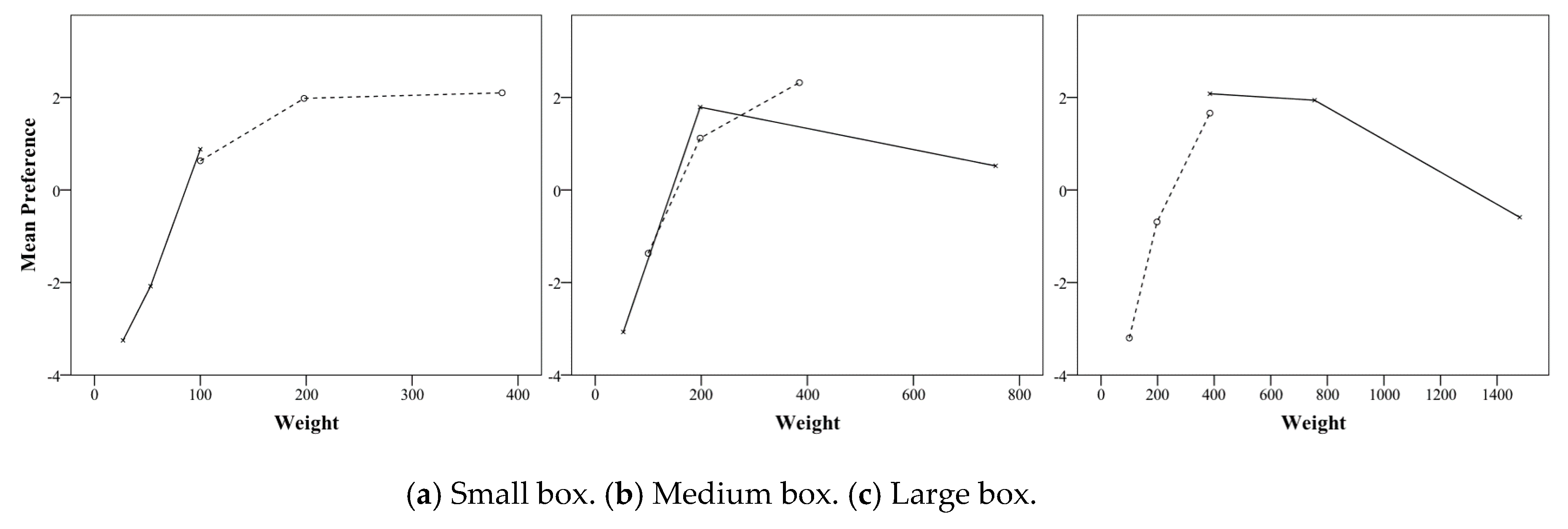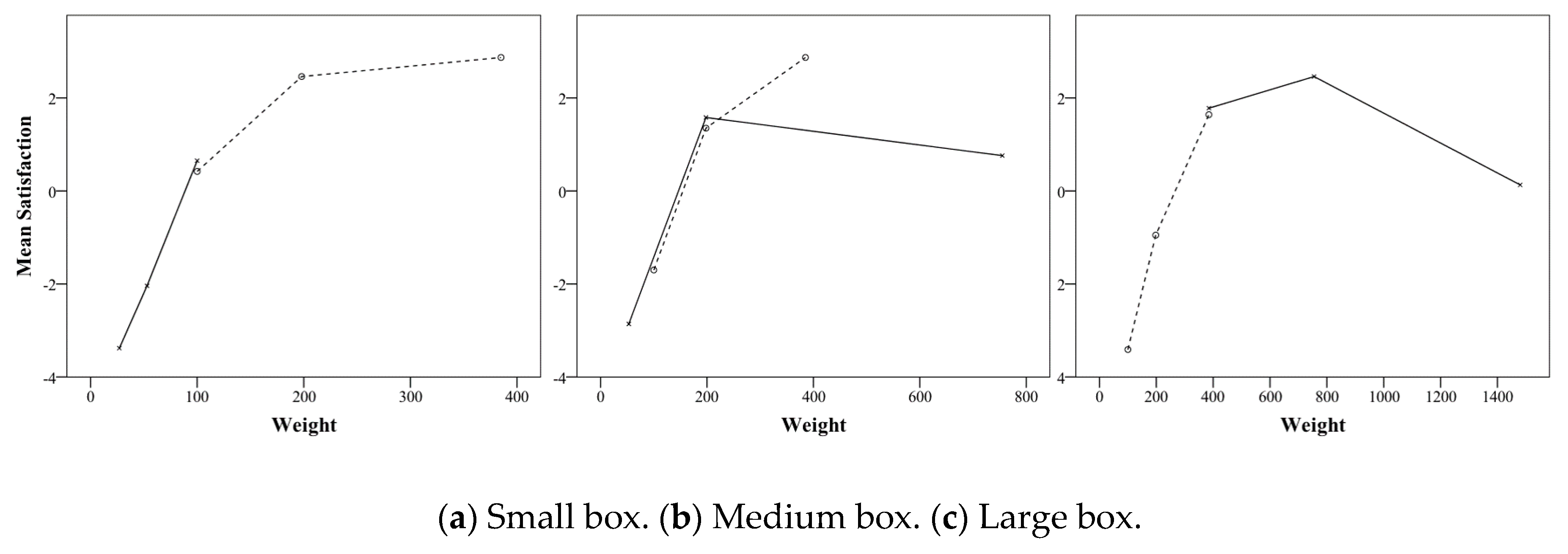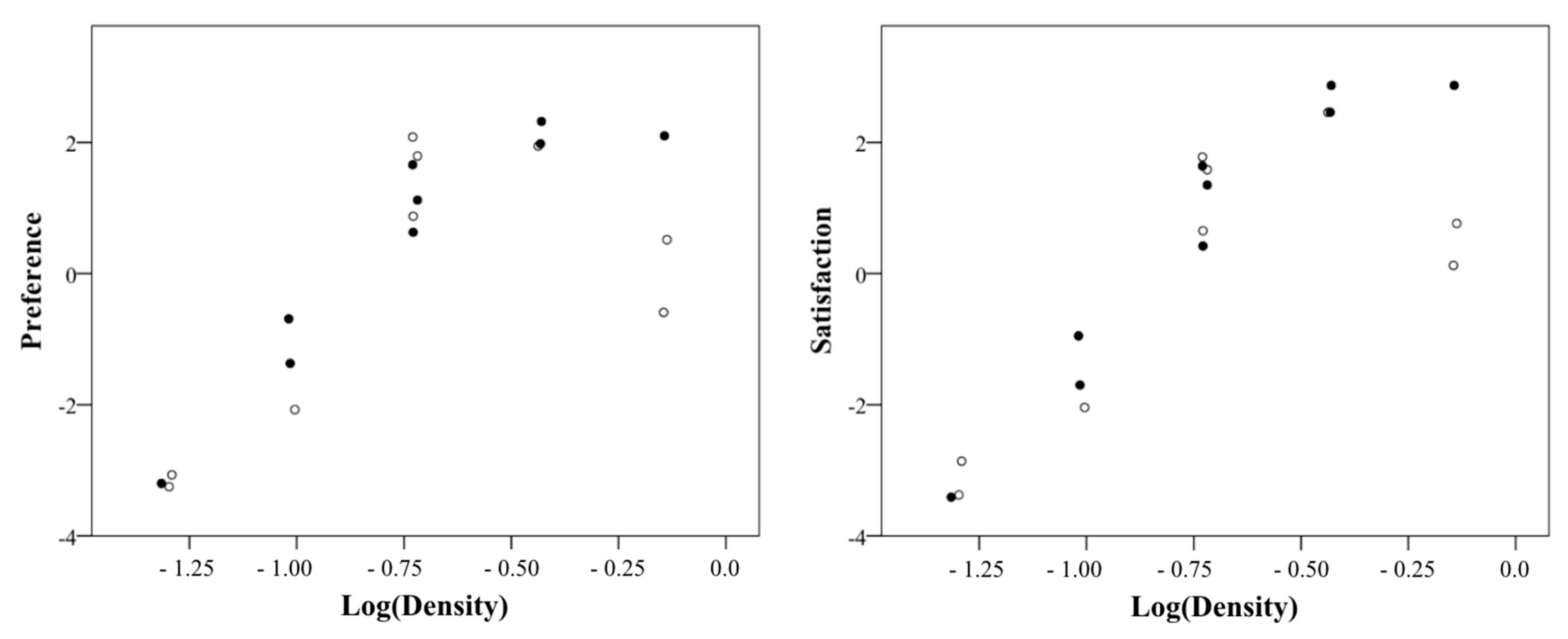1. Introduction
As the development of technology increases the functionality of products and the consideration of usability becomes more common, the importance of user experience (UX) in product design increases. Particularly, interest in users’ affective satisfaction is growing [
1,
2]. Users’ basic affects with respect to the product are unconsciously determined by the product characteristics as detected by the various senses [
3]. Because basic affects influence more complex affects, such as brand image and product satisfaction, designers must be able to set a product’s sensory properties based on the target affects that they want to convey to the user. To achieve this, various research studies in the field of affective engineering are concerned with the external appearance of the product [
4], visual design [
5], surface material [
6], characterization of operation [
7] and feedback sound [
8] for affective satisfaction.
The affective satisfaction experienced in a user’s sense of force, such as perceived product maneuverability and robustness, is an area that has received less attention. However, basic research on force sense has been actively conducted. The sense of strength has been studied in the field of experimental psychology. It is known that the perception of strength and weight is mainly caused by the motion command generated in the brain, and in part, the passive sensation felt in the muscles according to the exercise and touch of the skin [
9]. The sense of force can be defined as the ability to discern the magnitude of force and weight with the use of voluntary muscular exertion [
9]. Based on the research that analyzed the satisfaction of the exterior panel stiffness of a car, the sense of power turned out to be important in terms of affective satisfaction, and the application of the affective satisfaction technique also turned out to be highly effective [
10]. Overall, research on the sense of force is still relatively insufficient compared to that on other senses.
The weight of the product has been studied in some products as an important influencing factor determining the affective satisfaction of users; however, the research on this topic continues to be lacking. The preference and affect of product weight were studied in mobile phones [
11,
12], writing [
13], and clothing [
14]. In these studies, the valence of heaviness and weight-positive affect differ according to the product. In addition, in the food industry, the influence of the weight of the packaging or container on the preference for the product has been partially recognized [
15,
16], but the effect on affect has not been studied actively compared to the other properties of products. Note that, of course, research on the packaging of the food itself has been actively conducted [
17,
18]. Additionally, some food packages may offer a healthy image, as well as a desire to buy [
19,
20].
It is known that the perceived weight of an object at the sensory level is influenced by the weight of the object, as well as the size, material, and color. For instance, in the case of objects of the same weight, but different sizes, we perceive heavier objects to have smaller sizes [
9]. This is explained by the fact that our brain assigns a smaller amount of muscle force than the actual force required to lift the object. On the contrary, in case of a large object, the brain assigns more force than the force required to lift the object, which leads to a perception of lesser weight. The same principle applies to objects of the same weight, but of different materials, which means that wooden objects are heavier than iron objects. Additionally, for objects of the same weight, but different colors, we feel that light objects are heavier than dark ones. The demographic characteristics, such as gender and age, as well as haptic features of objects can also affect perceived weight and consumption [
21,
22].
However, existing studies on the affect of product weight neglected product size, which are closely related to weight and considered in the force sense studies. Existing studies on the weight of products, such as cell phones, clothing, and writing instruments do not suggest how the interaction between weight and size influences users’ affects. In addition, studies on the packaging and container weight of food products also focused on the visual perceived weight based on the position of the product image on the packaging paper or the weight of the container, but there was no consideration of the size. Generally, the weight of a product is proportional to its size, so a product design considering affective satisfaction requires setting the size together with its weight. Research on affect that considers the weight and size of a product can show preference weight for various size, that is, the preferred density of the product.
Therefore, this study seeks users’ satisfaction according to product weight and size and suggests preference weight according to product size. To meet the study objective, cookies were selected, and the satisfaction with and preference for cookies with various weights and sizes were evaluated. The selected cookie products are sold in various weights and sizes in Korea and were suitable for this study. The cookie was packed in a paper box, and it was easy to change the weight of the product. This study is based on the assumption that user satisfaction would increase based on the weight of the cookie product, but it did not increase when it was excessively heavy. In other words, this study predicted that there would be a preferred weight limit depending on the size of the cooked product, and propose it. The existing force sense studies mentioned above revealed the illusion of perceived weight according to weight and size in the sensory dimension, but this study can express affective change of product satisfaction according to weight and size.
2. Literature Review
Product weight has been studied for some products as an important design factor affecting users’ affective satisfaction, and valence of heaviness has been reported differently depending on the product. For mobile phones, weight is a major consideration that affects purchase decisions, along with size [
23]. For example, the weight of the external attributes of the mobile phone has the greatest influence on the luxuriousness [
11]. Also, as the weight of a mobile phone increases, user preference decreases, but reliability and robustness increase [
12]. In the case of the tool, the heaviest weight among 6.8, 13.9, and 21.4 g weights turned out to have the highest scores on writing and comfort [
13], while weight turned out to have a negative effect on affect and preference of fabric [
14]. The effects of product characteristics on affective satisfaction are determined by the user’s affective state [
24] and the fit of product use [
25,
26]. Consequently, the direction of the effect of product weight on product preference depends on the utility of the product [
16]. Users generally prefer heavy items when the quantity of products is important, such as confectionery products and do not prefer heaviness when portability becomes important, such as mobile phones.
In the sensory dimension, research has been conducted on the relationship between perceived weight and vision. However, in the cognitive and affective dimension, the perceived weight has been studied inadequately despite its importance. Our sensory experience is often associated with concept recognition and is a necessary part of conceptual cognitive activity [
27,
28,
29,
30]. For example, in the sense of space, the center is important, the periphery is ancillary, the upward direction is increasing, the downward direction is decreasing, and the proximity of the distance is related to the familiar and falling is the unfamiliar concept [
31]. Perceived weight is metaphorically related to the concept of importance, authenticity, and excellence [
32,
33]. The perceived weight in product families, such as perfume and wine bottles, influences quality and price [
34]. In a social behavioral context, the weight of the clipboard on which the application was placed influences the applicant’s impression [
32]. Candidates whose applications were placed on heavy clipboards were found to be more important and better rated. However, the sense of power, such as perceived weight, continues to be an important factor in our personal and social daily life, but cognition and affect in various situations has not been sufficiently studied [
35].
The sensibility of a product originating from one sensation is also influenced by other senses, and attempts to grasp this from a multisensory aspect are being actively made. The relationship between product sensibility determined by one sensation and other senses is called crossmodal correspondence. For example, the flavor intensity of yogurt is affected by the visual color and shape of the wrapping paper [
36]. In addition, fabric swatches having lemon or lavender fragrances appear tactually smoother than those having animal fragrances [
37]. The crisp of potato chips increases when the intensity, and frequency of the food crunching sound, is high [
38]. This crossmodal correspondence study can present a combination of various sensory information to transmit the target sensibility more.
The crossmodal correspondence study of the food industry has partially examined the effect of the weight of packaging or containers on the preference of the product, but the research on this topic remains insufficient. In the food industry, interest in the crossmodal correspondence of packaging or containers to content has increased, and its shape, color, texture, smell, and sound affect not only user interaction [
39], but also taste experience and product evaluation [
40,
41,
42]. However, the weight is relatively neglected. Few studies on this have been conducted as follows. Yogurt preference and the expected price of the heavy container turned out to be high [
15], while perceived weight and preference seemed to be high when the product image was located at the bottom right [
16]. In addition, non-overpackaged products could provide customers with environmental conscious [
43].
5. A Case Study for Verification of Marginal Density
A verification experiment was additionally conducted to confirm if the proposed satisfaction and preference marginal densities were maintained in different size and weight combinations. In the previous experiment, all three sizes (i.e., large, medium, and small) were set to weights of 100, 198, and 385 g. Small boxes consisted of only commercial weights (100 g) and larger weights (198 and 385 g), while the large box had only a commercial weight (385 g) and smaller weights (100 and 198 g). The experiment results revealed that the preference and satisfaction level of 198 g, which is one step higher than the sales weight (100 g), increased significantly in the case of the small box, but the preference and satisfaction level of 385 g, which is larger than this, did not increase any more. In the medium case, the preference and satisfaction level of 385 g, which is one step higher than the sales weight (198 g), was significantly higher. Whether these larger weight preferences and satisfaction would increase no further was not confirmed as there were no corresponding weight conditions. Additionally, in the case of the large box, the preference and satisfaction of the sales weight (385 g) were significantly higher than that of the smaller weight (100 and 198 g), but it was not confirmed whether the preference and satisfaction tendency of the weights were larger than the sales weight. Therefore, this additional case study verifies the proposed limit density, including the weight conditions smaller than the sales weight in case of the small box, weight conditions larger than sales weight in case of big box, and weight conditions extended from full weight range in case of the medium box.
5.1. Design of Experiment
In this test, 36 healthy university students (24 male and 12 female) participated voluntarily. They did not participate in the previous experiment and passed all of the line length size estimation ability tests. In this study, the weight condition of each size to be included in the verification experiment was selected based on the cookie densities of the previous experiment. The density of the confectionery box size and weight combination in the previous experiment is shown in
Table 11. The weight of the cookie box was calculated considering the box volume and five densities. The weight not included in the previous experiment for each box size was used for the verification experiment (gray part of
Table 11). Note that gray cells in
Table 11 are included in the validation experiment, while white cells were included in the previous experiment. In the case of small boxes, 27 and 53 g were selected as the weight of the verification experiment, and the commercial weight of 100 g was also included. In the case of the medium box, 53 and 755 g were selected as the weight of the verification experiment, and the commercial sales weight of 198 g was also included. For the large box, 755 and 1480 g were selected as the weight of the verification experiment, and the commercial sales weight was also included. The selected nine condition boxes were prepared by removing the contents or using the weights similar to the previous experiment.
5.2. Experimental Procedure
The procedure of this verification experiment was the same as the previous experiment. Participants were informed about the purpose of the experiment, method, and evaluation items, and were given a confection box according to the randomized box number. The perceived weight, preference, and satisfaction were evaluated by the same procedure as the previous experiment. The perceived weight was evaluated according to the modulus method, and the preference and satisfaction were evaluated according to the 11-point SD scale.
5.3. Results
5.3.1. Perceived Weight
In this test, the perceived weight tends to increase as the weight increases in all three box sizes similar to the previous experiment.
Figure 6 shows the perceived weight according to the weight of the small box, medium box, and large box. It was confirmed that the perceived weight increases as the weight increases in the small weight range (27 and 53 g) added with the small box weight of the second experiment and in the large weight range (755 and 1480 g) added with the large box weight. The same results were obtained in the weight range (53 and 755 g) added by the medium box weight of the second experiment. In
Figure 6, although the first and second experimental perceived weights did not match at 100 g of the small box, 198 g of the medium box, and 385 g of the large box, the perceived weight in the entire weight range increases steadily with weight.
5.3.2. Preference
The results of the first experiment that preference marginal weight did not continuously increase with increasing weight were confirmed in the medium and large boxes of this verification experiment. In the first experiment, the presence of the preferred limit weight was confirmed only in the small box, but in the second verification experiment, the limit weight also appeared in the medium and large boxes.
Figure 7 shows the preference according to the weight of the small box, medium box and large box, as the dotted line in the first experiment, and the solid line in the second experiment as the verification experiment. In the medium box of the first experiment, the preference of 385 g, which is one step higher than the sales weight (198 g), was significantly higher (dashed line in
Figure 7b). However, in the validation experiment, the preference of 755 g, which is two steps heavier than the sales weight of the medium box, was rather smaller than the sales weight (solid line in
Figure 7b). Additionally, in the large box of verification experiments, the preference of 755 g, which is one step heavier than the sales weight (385 g), did not increase anymore, and the preference of 1480 g, which is two steps heavier, was rather small (solid line in
Figure 7c).
In addition, the results of the first experiment showed that the preference decreased sharply as the box weight was lower than the sales weight of the box. The same result was confirmed in the verification experiment. The preference for smaller weights (27 and 53 g) in the small boxes of the verification experiment was sharply lower than the sales weight, and the preference for weight (54 g), which is two steps less than the sales weight in the medium box, was smaller than the sales weight (198 g). This was lower than the preference score of 100 g, which was one step lower than the medium box sales weight in the first experiment.
5.3.3. Satisfaction
In the first experiment, satisfaction did not continuously increase with increasing weight, but satisfaction limit weight was also confirmed in the medium box and large box of this test. The existence of the satisfactory marginal weight was confirmed only in the small box in the first experiment, but in the second verification experiment, the marginal weight also appeared in the medium box and the large box.
Figure 8 shows the satisfaction with the weight of the small box, medium box and large box, with the dotted line in the first experiment, and the solid line in the second experiment. In the medium box of the first experiment, the satisfaction level of 385 g, which is one step higher than the sales weight (198 g), was significantly higher (dashed line in
Figure 8b), but in the verification experiment, the 755 g satisfaction, which was included in the two-step heavy weight of the medium box’s sales weight, was rather smaller than the sales weight (solid line in
Figure 8b). Additionally, in the large box of the verification experiment, 755 g of one step heavier than the sales weight (385 g) was higher than the sales weight, but satisfaction with the two-stage heavy 1480 g was rather small (solid line in
Figure 8c).
The results of the first experiment and the verification experiment showed that the lighter the box was, the less was the drastic reduction in satisfaction. The satisfaction with small weights (27 and 53 g) smaller than the sales weight in the small box of the verification experiment was sharply lower than the sales weight (
Figure 8a solid line). In the medium box, the satisfaction with two steps less than the sales weight (54 g) was less than the sales weight (198 g) (
Figure 8b solid line), which was lower than the medium box sales weight in the first experiment, lower than the satisfaction score of 100 g.
5.3.4. Density of Confectionery Box
This study adds verification test data to balance the data of each density level in the scatter plot among the box density, preference, and satisfaction of the first experiment (
Figure 9). At density levels other than the largest density, the black point of the first experiment and the white point of the verification experiment were close to each other, confirming that the relationship among density, preference, and satisfaction of the first experiment was maintained in the verification experiment. In both experiments, both satisfaction and preference increased linearly to 0.37 g/cm
3 (logarithmic transformed value = −0.43), but no longer increased or decreased at the highest density (0.72 g/cm
3) (logarithmic transformed value = −0.14).
Table 12 presents the results of the regression analysis of the density interval in which the logarithmic transformed density has a linear relationship with the preference and satisfaction in the two experimental data. Both regression models showed high explanatory power, residual independence, and equispaced distribution. Therefore, the preference and satisfaction limit density were 0.37 g/cm
3 in the verification test.
6. Discussion
Existing experimental psychology studies have studied perceived weight according to the weight and size of an object, but this study has significance in studying affect (i.e., preference and satisfaction) according to the object size. Existing SWI studies have analyzed the illusion of perceived weight according to the weight and size of an object as a field of force sense, and found that perceived weight increases as the object size decreases at the same weight [
9,
21,
46]. In these studies, perceived weight, preference, and satisfaction were examined similarly. Note that attempting to identify SWI characteristics in terms of preference and satisfaction is a major contribution of this study. The perceived weight of the confectionery box was the same as the SWI result of the previous studies, and preference and satisfaction increased with the same weight, but it did not appear any more than the certain limit weight. In the study revealed that the perceived weight, which is the sensory dimension, has an infinite linear relationship with the weight and is inversely proportional to the size, but that the affective dimension, preference, and satisfaction have this relationship limitedly. This means that the perceived weight, which is the sensory dimension, is mainly determined by external stimuli, while the affective dimension, preference, and satisfaction are determined by internal factors, such as cognitive experience, as well as external stimuli.
This study has the same result as the SWI phenomenon found in previous studies in the perceived weight analysis of confectionery boxes, implying that this study appropriately used the experimental and analytical methods of previous studies. At the 100 g weight of the first experiment, the small box showed significantly greater perceived weight than the medium box and the large box, and the medium box showed significantly greater perceived weight than the large box, which was the same at 198 g and 385 g. Thus, the perceived weight of the box in this study increased significantly as the size decreased. In addition, the coefficients of the regression model that estimated the perceived weight of the confection box in terms of weight and size were statistically similar to those of [
46]. This is explained by the fact that this study used the modulus method for estimating the perceived weight of confection boxes and the logarithmic transform for perceived weight regression analysis as in previous studies [
21,
46].
This study has experimentally proved that there is a limit of weight that is preferred and satisfactory in a certain size of a cookie box. The study is based on the assumption that the preference and satisfaction of confectionery products do not increase continuously according to their weight, but have limitations, unlike perceived weight, which increases the proportionally with weight. As a result of the first experiment on nine kinds of confectionery boxes of three weights (i.e., 100, 198, and 385 g) and three sizes (i.e., large, medium, and small), the preference and satisfaction of one size of confectionery tend not to increase more than the specific weight. In the small box, the preference and satisfaction of 198 g weight increased significantly compared to the sales weight of 100 g, but the preference and satisfaction of the weight of 385 g did not exceed the weight of 198 g. In the medium box, the preference and satisfaction of the weight of 385 g compared to the sales weight of 198 g demonstrated a significant increase. The degree of increase was similar to the satisfaction and preference of 198 g weight compared to the 100 g in the small box. (
Figure 2 and
Figure 3). These results suggest that weighing one step higher than the weight of the confectionery box sold on the market is preferred, but the preference for a two-step weight no longer increased.
The validation experiment of this study confirmed the presence of preference and satisfaction limit weight. In the limit weight results of the first experiment, the preference and satisfaction of the two-step weight (755 g, 0.72g/cm3) of the medium box were expected to be no longer greater than the commercial sales weight. In the case of large boxes, the preference and satisfaction level of 755 g (0.37g/cm3) is higher than the sales weight (385 g), but the preference and satisfaction of the two-step weight (1480 g, 0.72g/cm3) were not expected to increase any more. As a result of the verification, the preference of 775 g that is two steps higher than the medium box sales weight (198 g) and satisfaction decreased rather than the 198 g. Additionally, the satisfaction of 755 g, which is higher than sales weight (385 g) in the large box, was higher than 385 g, but the preference was similar, and the preference and satisfaction level of 1480 g were lower than 385 g. Therefore, the verification test of this study fully proved the prediction based on the existence of the limit weight of the first experiment.
On the other hand, the first experiment of this study shows that satisfaction and preference decrease sharply when the weight of the cookie box is smaller than the market sale weight. In the medium box of the first experiment, the preference and satisfaction level of 100 g, which is one step lower than the sales weight (198 g), decreased sharply, and the preference and satisfaction of 198 g, which is one step lower than the sales weight (385 g) also fell sharply. In addition, the preference and satisfaction level of 100 g, which is two steps smaller than the sales weight, in the large box sharply decreased than 198 g. These results indicate that as the weight of the box of confectionery was lower than the weight sold on the market, the preference, and the satisfaction reduced sharply. Due to this tendency, the preference and satisfaction level of 53 g, which is two orders of magnitude smaller than the sales weight of the medium box (198 g), is expected to drop sharply from 100 g and the preference and satisfaction of 53 g and 27 g, which are smaller than the sales weight of small boxes (100 g), are expected to decrease sharply. This prediction was proved in the verification experiment of this study. The preference and satisfaction level of 53 g, which is two steps smaller than the sales weight of the medium box (198 g), sharply decreased from 100 g, which is one step smaller than the sales weight. Additionally, the preference and satisfaction level of 53 g, which is one step lower than the sales weight of the small box (100 g), sharply decreased from 100 g, and the preference and satisfaction of 27 g smaller than this decreased sharply than 53 g.
This study is meaningful as it suggests a relationship regression model of confectionery box density, preference, and satisfaction in order to investigate the limit weight according to confectionery box size. The scatter plot of density, preference, and satisfaction of the 18 cookie boxes with the different sizes and weights showed the highest linear relationship when the density was logarithmically transformed. Note that preference and satisfaction increased to 0.37 g/cm3 density. Therefore, regression analysis using data with less than this density shows that the explanatory power of the regression model is very high (more than 90%). Therefore, we can set the weight by using the limit density of 0.37 g/cm3 of this study for a certain size in order to set the weight that increases the satisfaction and preference in the paper-boxed confectionery product. For example, a limit weight of 1000 cm3 volume is set to 370 g.
The preferred limit weights or densities suggested by this study are confined to confectionery products packed in paper boxes, which may vary depending on the product and the material. The preference for weight depends on the product [
21], and this study was limited to cookies, the preferred product of weight. Since perceived weight is influenced by the material, this study limited the packing materials of confectionery products to paper. Affective studies based on weight and size on other products are required in order to determine whether marginal weight and density depend on the product, in which weight is a preferred characteristic. In addition, it is necessary to study how preference and satisfaction increase according to the weight reduction of the product, in which the lightness is preferred, and whether there is a preferred limit weight.
